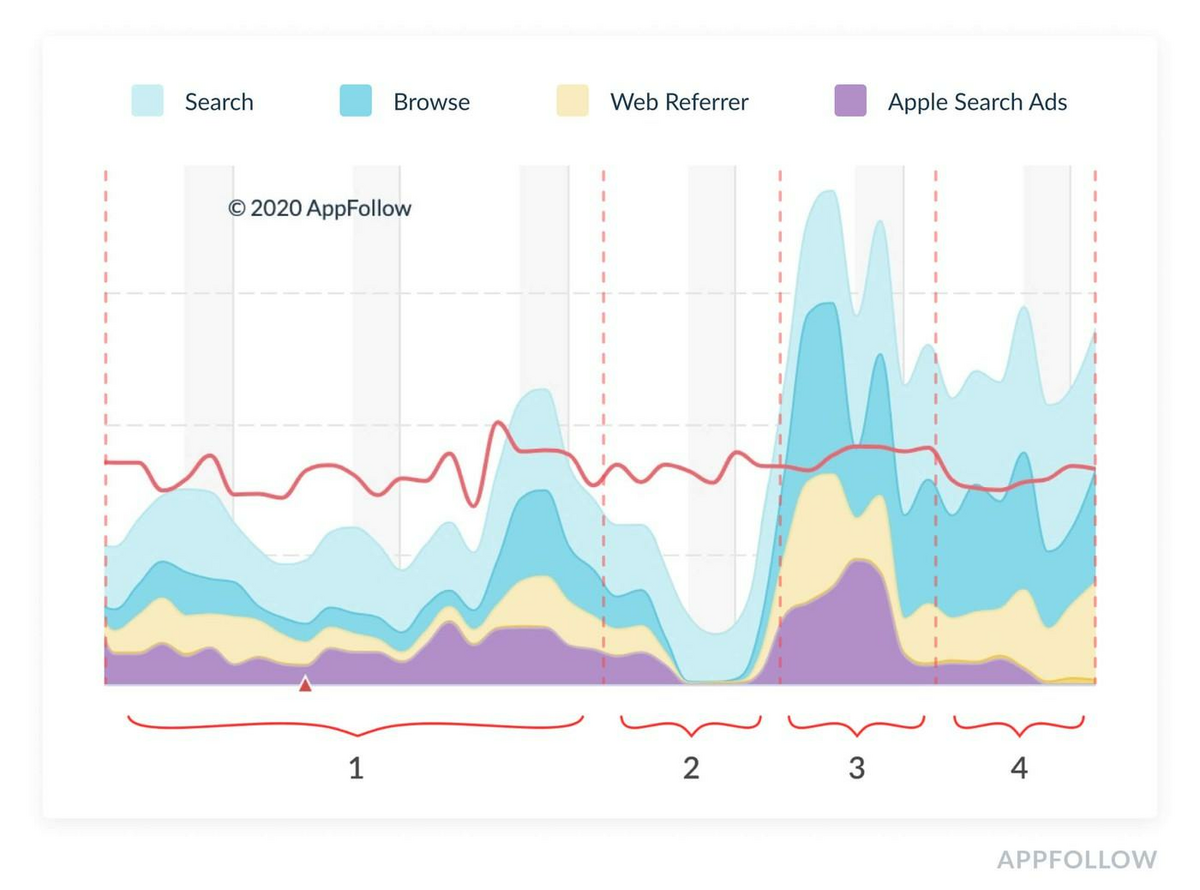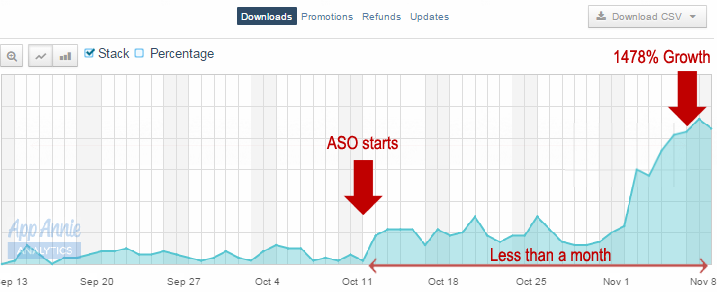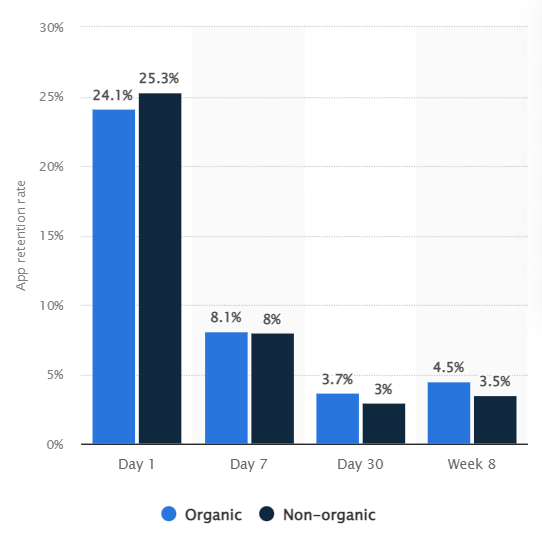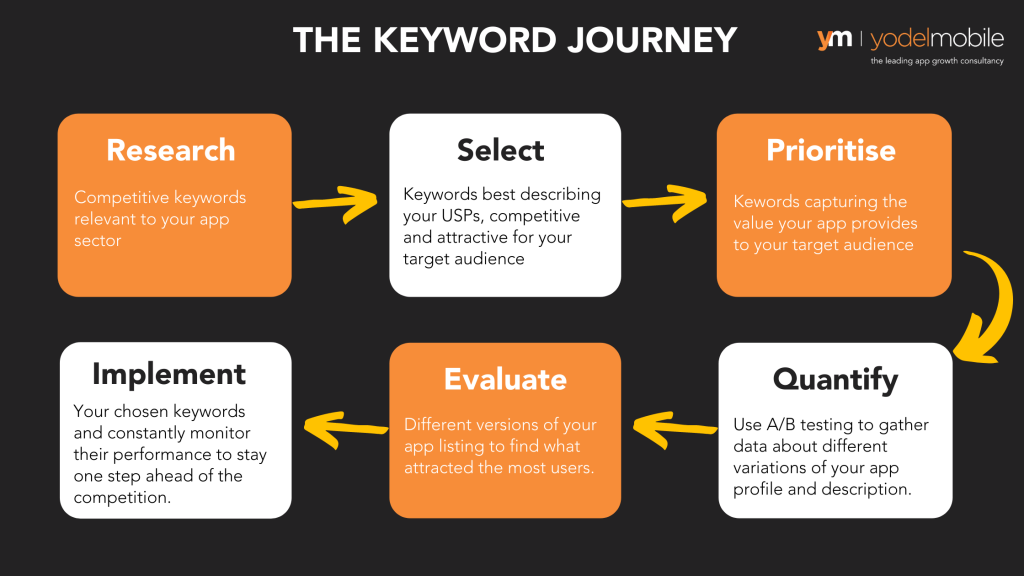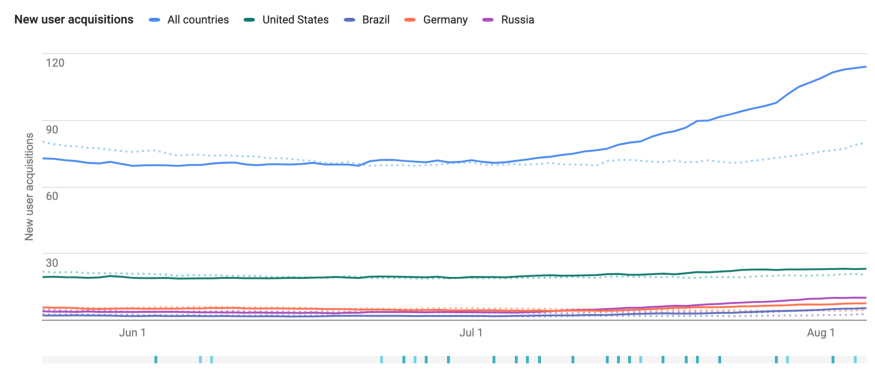After months of hard work, your app is finally complete. Congratulations, you did it!
But don’t rest on your laurels just yet.
Many developers fail to realize that the real work of ensuring their app’s success only starts after you launch it. Marketing, maintenance, monetization—the list goes on.
When you consider that there were more than 5,709,276 apps in both Google Play and Apple’s App Store in 2021 alone, standing out becomes vital.
That’s why app store optimization (ASO), which helps with organic traffic and visibility, is vital for success.
Here are some other reasons why ASO is crucial for effective app marketing.
Boost brand awareness
One of the biggest benefits of ASO is that it can give your app increased visibility in the app stores—even if they were not searching for you in the first place.
ASO becomes even more important when considering that search is the top method people use to discover new apps.
Source: Split Metrics
This is good news. It means that you don’t necessarily have to be on the top charts (which is hard to get into) or pay for ads (which can be costly) to become visible to users.
You can appear in search results when people look for a particular niche or topic using keywords. For example, if you have a travel app, targeting words like travel or travel guide app can get you in front of people who might be interested in traveling.
However, visibility is just one part of the equation. If you rank high in search results but don’t capture people’s attention fast enough, they won’t check you out.
A study by Storemaven revealed that you only have 3 – 6 seconds to make a great first impression on either decisive or explorer visitors. Here’s a quick overview of what that means:
Source: Storemaven
According to the same study, optimizing your first impression for both groups can increase your conversion rates by 35%. And the primary way you achieve this is through branding.
Consider that your app icon is the first thing people see when trying to decide if you’re worth a click. This is backed by an extensive study that proved an icon’s aesthetics influence whether someone clicks on it.
Your branding should also extend to your app page. The most important thing here is the name and subtitle of the app. It needs to instantly convey what your app is about and how it’ll help users.
For example, the Klarna app title and subheader immediately relay its value proposition—buy now, pay later:
Source: Phiture
Also crucial is the image gallery located just below the app page header. This is commonly used to show app screenshots. But a smarter strategy is to use the space to highlight your value proposition as well. A good example is Fit Mind:
Source: Fit Mind App Store
You can also show social proof, i.e., reviews, and other reasons to invite credibility and encourage downloads.
Source: Storemaven
When done right, app store optimization is a fantastic strategy to increase your user installs and build your brand.
You can start your ASO journey by reading our excellent guide here. After that, check out the top reasons your app will get rejected in the Apple App Store to avoid the most common mistakes and improve your chances of success.
Reduces user acquisition costs
App store optimization is a fantastic long-term marketing strategy.
Once you set it up, you can get more organic downloads with zero or minimal additional investment. This can lower your acquisition costs dramatically.
To better illustrate this in action, let’s look at a case study by App Follow. It involves an app agency that wanted to increase the ranking of their grocery delivery app in the app stores.
App Follow decided on a hybrid app store optimization approach: keyword targeting and Apple Search Ads (ASA). Take a look at the results of their campaign:
Source: App Follow
Notice section 2 in their timeline? That was when they paused Apple Search Ads to implement improvements using data gathered during step 1.
Then, when they ran the tweaked version of ASA again, there was a dramatic spike in organic traffic. Even when they weaned off ASA in the latter part of the campaign, organic downloads remained high.
As a result of this ASO campaign, the agency was able to save $9,820 a month in user acquisition spending.
Because of its relatively low cost, app store optimization can be a powerful acquisition tool for app developers who don’t have huge budgets.
It can even save apps on the brink of failure.
This is exactly what happened with the Chinese app Happy Taiwanese Mahjong. It was a dying app, getting only 83 downloads a month. What’s more, the developer didn’t have any budget for ads.
But after a short ASO campaign, the resulting turnaround was spectacular. Take a look:
Source: Meatti
That’s right—in less than a month, they achieved a 1,478% growth rate. No ads were involved, nor was the app itself changed or updated. The feat was purely from ASO.
These two examples show how powerful and cost-efficient ASO can be. It’s also one of the best ways to ensure consistent and sustainable visibility. So let’s delve into that next.
Ensures sustainable app visibility
ASO is a crucial ingredient for sustained, long-term app visibility.
As you’ve seen in the previous section, once you’ve done the hard work with ASO, it can deliver results for a much longer period. In contrast, paid ads require a consistent investment to continue attracting users.
Justin Mailk is one of the app developers who’s seen massive, sustained success with ASO. He says:
“If you want to create long-term, sustainable income, focusing on ASO so that your apps provide consistent returns over the course of months, if not years, can be a great strategy.”
But like most developers, this wasn’t always the case for Mailk. The apps he made in the beginning always went through the honeymoon phase—a surge in downloads followed by a sudden drop. It looks like this:
Source: App Empire
But by harnessing ASO, he now earns $10 consistently for the entire lifetime of the app, without investing any money in ads. It seems small, but if you consider that he has over 60 apps in his portfolio, that can easily net thousands a month.
However, we’re not here to downplay the importance of paid ads. On the contrary, it’s a better strategy to combine organic and paid channels.
There’s plenty of evidence to back this up. A study by Tune found out paid ads can boost ASO by as much as 148%. Even a small increase in paid traffic can translate to a huge spike in organic installs.
This is what’s happened to a major e-commerce player. When it increased its paid ads by a modest 20% over two days, the organic installs on those same days jumped by a surprising 148%.
Source: Tune
There are several possible theories as to the reasons behind this. One is that paid ads can increase signaling factors and interest, translating to higher search rankings. It can also be due to increased exposure, which breeds familiarity with people.
But the fact remains that this synergy wouldn’t be possible if your ASO is non-existent. ASO is there for sustained acquisition, and paid ads are just there to boost it.
Improves user targeting
It doesn’t matter whether you have the best app in the world; if the wrong people are using it, chances are your retention rate will plummet.
This is another reason ASO is crucial: it helps you reach the right users to download and use your app.
For example, take a look at this Statista study:
Source: Statista
It clearly shows that retention rates from organic installs tend to do slightly better than non-organic ones.
Proper targeting can (and should) even update with the times. For example, the fitness app Peloton changed its app description to at-home fitness. The goal was to target people stuck at home and looking for exercise options during the pandemic.
The result?
Peloton’s organic download tripled not soon after they did this. Their keyword volume also soared nearly 20%. You can see this as a dramatic spike in the graph below:
Source: App Tweak
Keyword optimization, like what Peloton did, is a crucial aspect of proper user targeting.
By matching your keywords with the interests of your market, you’ll ensure that their needs and problems align with your app’s value proposition.
That’s why knowing your audience is essential to the process.
Source: Yodel Mobile
Keyword optimization can be challenging and time-consuming (which dispels the myth that ASO is “easy and free”). However, if you get it right, the high retention rates you can get will make the effort well worth it.
Increases revenue
We’ve been talking about how ASO lowers costs and increases brand awareness.
But really, all of these are pointing to one big benefit: it can boost your revenues as well.
The reasons are obvious.
ASO can improve your visibility, which means more people will download your app. And the more users you have, the greater your potential revenue can be.
One good case study to illustrate this fact is by the Spanish app marketing agency PickASO.
In one app, they increased revenue by 35X just by doing ASO alone. Here is the app’s Google AdMob revenue chart:
Source: The Tool
Organic growth can even help improve in-app purchases.
That’s because it’s largely a numbers game: the more installs you have, the more users you’ll get that’ll hopefully purchase things in-app (provided you have a great app experience, of course).
This case study discusses how one developer was able to up his app’s revenue by 40% simply by increasing the number of app installs and active users. You can see the correlation of these three metrics in these graphs:
Source: Medium / Azmi Rutkay Biyik
ASO can also help maximize your conversion rates, or the number of people who view your app page and download it.
Tactics like using an attractive app icon, optimizing product descriptions, and even keyword targeting can help convert more people and improve your revenue.
Although to set expectations, know that conversion rates vary wildly between app categories.
For example, the Google Play Store category with the highest average conversion rate in 2021 was in Travel and Local, at 58%. This is in comparison to the average of 33%:
Source: App Tweak
ASO might be a slower process than paid ads, but there’s no doubt that it works. The key is to invest in the time and effort necessary to do it right.
Helps you reach a global audience
App store optimization is also critical if you want to tap into international markets through app localization.
Localization is when you tailor fit your app’s page to reflect the language and culture of another market.
Using a fast food analogy, think of how McDonald’s changes its food offerings depending on the country.
That’s localization in action.
Source: International Marketing Mix
The most obvious reason you’d want to do this is the language barrier. In addition, showing aspects of a market’s culture shows sensitivity and familiarity, increasing conversion rates.
For example, look at how Google Maps reflects the landmarks of each country’s version of the app:
Source: Storemaven
But beyond language and culture, there’s another reason localization is important: market nuances.
Take the US and Japan, for example.
The Storemaven study we’ve quoted earlier in the article has concluded that American users prefer to browse through Gallery screenshots more than any other market. They are also 2X more likely to explore the app page.
In contrast, Japanese users lean more towards long descriptions and text-heavy images.
Here’s a good example of the nuances of these two markets side-by-side.
Source: Storemaven
Notice how the Japanese version features more text in the screenshots than the American version. The app icons are also different, no doubt to reflect the cultural nuances of each.
Localizing pages is challenging because you need to know a country’s language and culture more deeply. Unfortunately, this isn’t always easy as a foreigner, so getting a local expert to help you is worthwhile.
Done properly, localization can help your app reach a wider global audience.
App store optimization is challenging but worth it
In this article, we’ve laid out all the great benefits of doing ASO, including how it’s a sustainable and low-cost user acquisition strategy.
It might also seem like doing ASO is quick and easy, but make no mistake—it can be difficult. It requires strategy, patience, and trial and error to pull off.
But given the right knowledge, anyone can achieve success with ASO.






